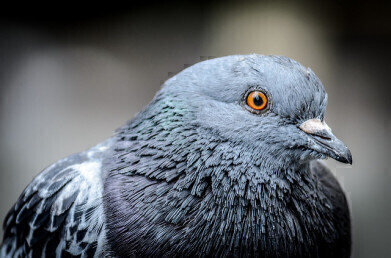Air Clean Up
How Can Pigeons Help with Air Monitoring?
Mar 05 2018
Scientists looking to understand more about the concentrations of certain contaminants in our cities – and on their effects on the human body – may have an unlikely ally in the shape of the humble pigeon.
Though often regarded as a scourge on society, pigeons are exposed to the same air as urban dwellers on a 24-hour basis, with many animals not moving too far from their nesting spots throughout the whole day. As such, they may be able to provide reliable and useful information on pollution hotspots and their impact on our own health.
A barometer for pollution
It’s well known that human activity has a direct and often detrimental impact on other animal species. In agriculture, the use of pesticides can pose a global threat to biodiversity by harming species other than its target – but city slicking birds and animals might be just as at risk.
The common pigeon is being viewed as a useful barometer for the pollution levels within our towns and cities, since they consume the same air, food and water as humans and rarely stray outwith a defined area. In one published study, an American researcher named Dr Rebecca Calisi found that there was a direct link between concentrations of lead within the blood of pigeons in New York as in the blood of schoolchildren from the same boroughs.
Other studies in Brazil and the Netherlands have come to similar conclusions, leading scientists to believe that pigeons can provide insight into hotspots of the contaminant around the city. Not only that, they may also offer a window into how lead affects their health and lifestyle.
Pigeon as guinea pig
Dr Calisi’s latest study – soon to be published – she and her team investigated how the build-up of lead affects such natural functions as the production of protein and the reproductive system in pigeons. It might seem that we share little in common with these so-called “flying rats”, but Dr Calisi is not so quick to dismiss their contribution.
“Birds, like us, are vertebrates. We share a lot of the same evolutionary history, and our bodies have many similarities in terms of tissue form and function,” she explained to the Guardian. “So as you see, what we learn in birds can have far-reaching implications.”
Dr Calisi is also hopeful that her work will extend to other contaminants in the future as well, including flame retardants, pesticides and heavy metals. For those looking to limit their own and their children's exposure to air pollution, this research could be a vital way of avoiding pollution hotspots and understanding how our body reacts to such exposure when it does occur.
Events
Apr 18 2024 Shanghai, China
Apr 22 2024 Hannover, Germany
Apr 23 2024 Kuala Lumpur, Malaysia
Apr 24 2024 Sao Paulo, Brasil
May 05 2024 Seville, Spain














